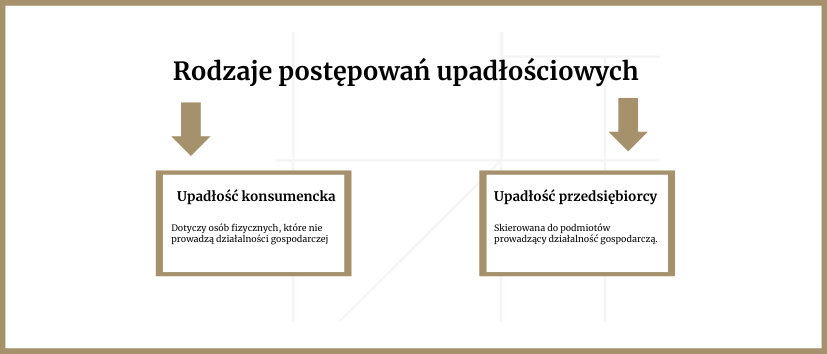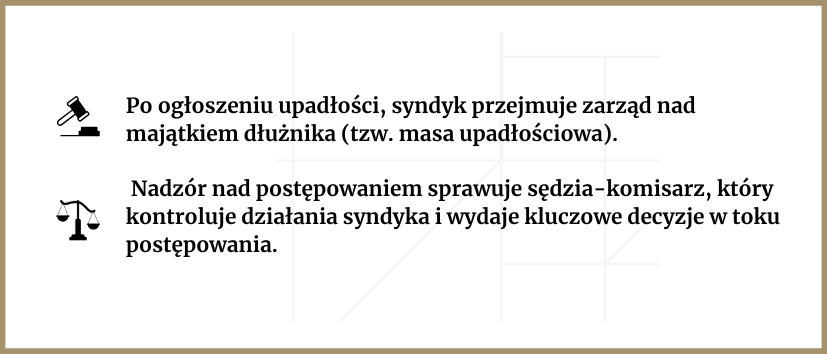Declaring bankruptcy is one of the most serious solutions in a situation where an entrepreneur, consumer or company is unable to meet financial obligations. This process allows for the arrangement of the financial situation from the perspective of both the debtor and the creditors. However, making a decision about Declaration of bankruptcy and going through the entire process requires understanding the rules, regulations, and procedures that govern this legal institution. In this article, we will discuss in detail what bankruptcy is, how to declare it, what the consequences are, and when it is an appropriate step.
Contents:
- A few words about the article - Listen
- What is bankruptcy?
- Types of bankruptcy proceedings
- When should an entrepreneur declare bankruptcy?
- Bankruptcy declaration procedure
- 1. Filing a bankruptcy petition
- 2. Court fee
- 3. Consideration of the application by the court
- 4. Actions of the trustee
- Consequences of declaring bankruptcy
- Alternatives to bankruptcy
- Summary
A few words about the article - Listen
What is bankruptcy?
Bankruptcy is a legal procedure aimed at resolving the debtor's insolvency. In Poland, it is regulated by two key acts:
- Bankruptcy law of 28 February 2003, which applies to entrepreneurs and individuals conducting business activities,
- Restructuring law, which offers alternative solutions in the event of a threat of insolvency.
Bankruptcy can be declared against a natural person, a legal person (e.g. a company), and other entities that conduct business activities. The procedure is intended to:
- Enabling creditors to recover part of their receivables,
- Sorting out the debtor's financial situation and ending his financial problems.
In case of individuals, bankruptcy can lead to debt relief, which means that after the proceedings are concluded the debtor is released from the obligations he was unable to repay.

Types of bankruptcy proceedings
The Polish legal system distinguishes two main types of bankruptcy proceedings:
- Consumer bankruptcy – applies to individuals who do not run a business. The main purpose of this procedure is to discharge the debtor's debt, i.e. to enable him to start his life anew without burdensome obligations.
- Entrepreneur bankruptcy – addressed to entities conducting business activities, such as companies, individuals conducting business activities or cooperatives. In this case, the proceedings are primarily aimed at satisfying creditors from the debtor's assets.

When should an entrepreneur declare bankruptcy?
A sole proprietor should consider declaring bankruptcy when:
- He is unable to settle his obligations. for a period exceeding three months, and in accordance with Article 21 of the Bankruptcy Law, the debtor is obliged file for bankruptcy within 30 days of the occurrence of the state of insolvency.
- Bankruptcy occurs when the debtor has lost the ability to settle his debts. obligations (no payments for at least 3 months) or its liabilities exceed value of the property for a period of more than 24 months (Article 11 of the Bankruptcy Law).
- There is no possibility of restructuring or obtaining financing to overcome the crisis.
Bankruptcy declaration procedure

1. Filing a bankruptcy petition
The application is submitted to the district court with jurisdiction over the place of business. It can be submitted by:
- the entrepreneur himself,
- creditor if the debtor does not pay the debt.
The application should include the following elements:
- entrepreneur’s identification data (name, surname, NIP, REGON, PESEL, registered office address),
- list of creditors and amount of liabilities,
- list of assets owned (real estate, equipment, vehicles, financial resources),
- evidence of insolvency (e.g. unpaid invoices, bank statements),
- information about any pending enforcement proceedings.
2. Court fee
- In the case of a sole proprietorship, the fee is PLN 1,000.
- If the entrepreneur is unable to pay the fee, he or she may apply for exemption from court fees.
3. Consideration of the application by the court
The court assesses whether the entrepreneur meets the conditions for declaring bankruptcy. Possible scenarios are:
- Declaration of bankruptcy and appointment of a trustee.
- Application dismissed, if the entrepreneur’s assets do not cover the costs of the proceedings.
- Suggesting restructuring proceedings, when there is a chance of regaining financial liquidity.
4. Actions of the trustee
After the declaration of bankruptcy, the trustee takes over the management of the debtor's assets (the so-called bankruptcy estate). The proceedings are supervised by a judge-commissioner, who controls the actions of the trustee and issues key decisions during the proceedings.
- The trustee takes over the management of the entrepreneur's assets (the so-called bankruptcy estate).
- The assets are liquidated and the funds obtained are divided among the creditors.
- Creditors must file their claims with the court within a certain time period.
Consequences of declaring bankruptcy
For the entrepreneur:
- Loss of control over assets.
- Possibility of writing off some or all of the debts after the proceedings are completed.
- Difficulty obtaining credit in the future.
- The need to close down a business.
For creditors:
- Time limitation of individual debt collection.
- Possibility of recovering part of the debt through the division of the debtor's assets.

Alternatives to bankruptcy
Before an entrepreneur decides to file for bankruptcy, it is worth considering other options:
- Restructuring – the possibility of concluding an arrangement with creditors and debt restructuring.
- Negotiations with creditors – possibility of dividing the liabilities into installments.
- Suspension of activity – gives time to improve the financial situation.
Summary
Declaring bankruptcy of a sole proprietorship is a complicated and serious process that can lead to the entrepreneur's debt relief. However, it is worth considering other options, such as restructuring or negotiations with creditors, before making this decision. Using the help of a lawyer or restructuring advisor can make it easier to go through this difficult process and find the best solution.


























